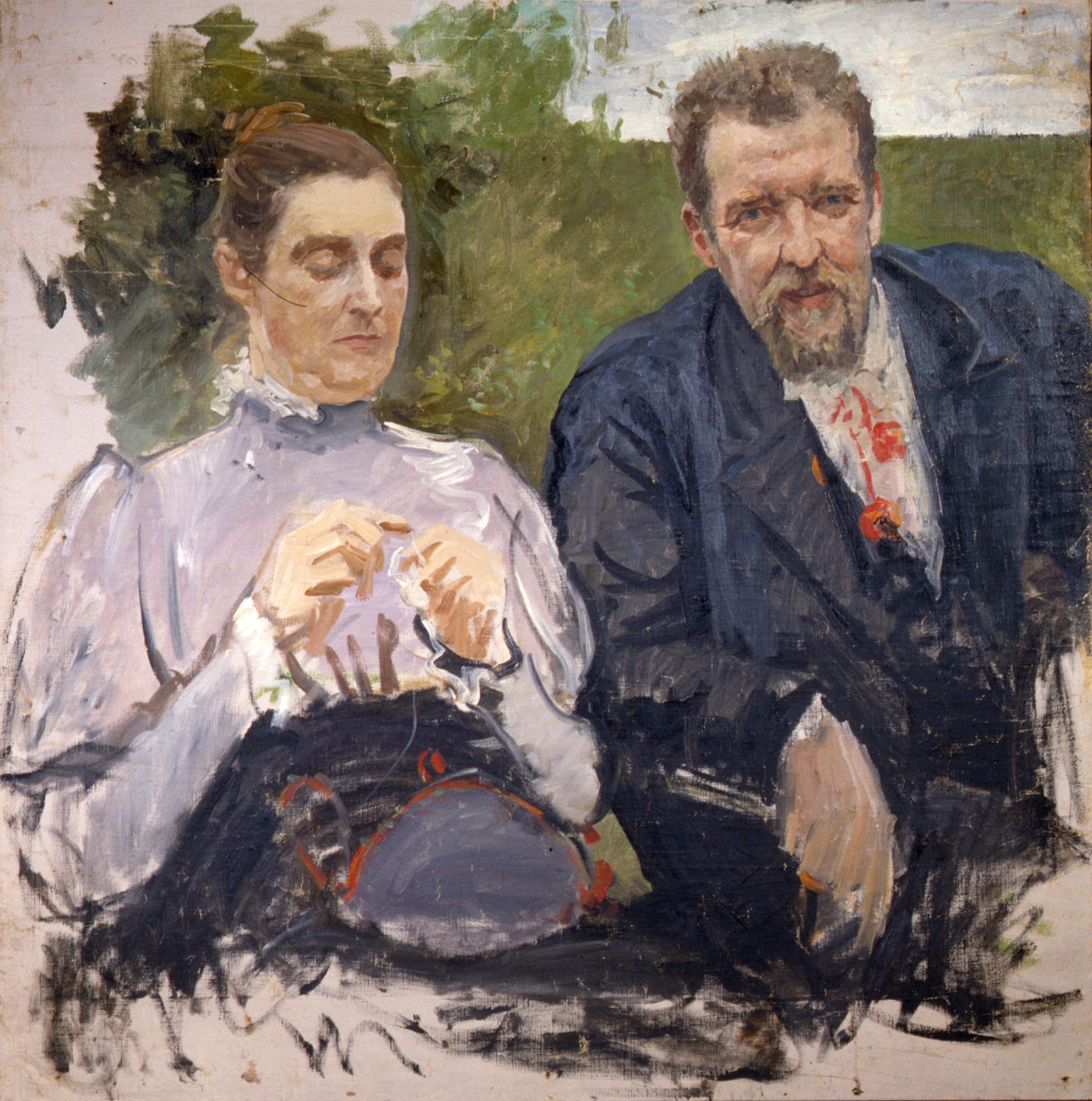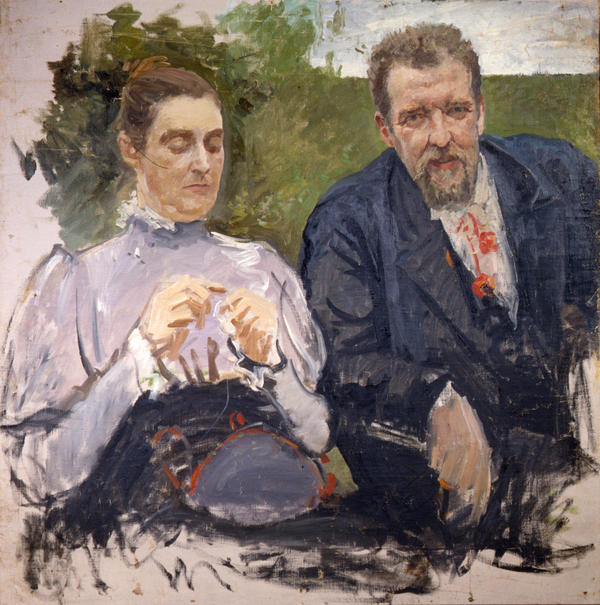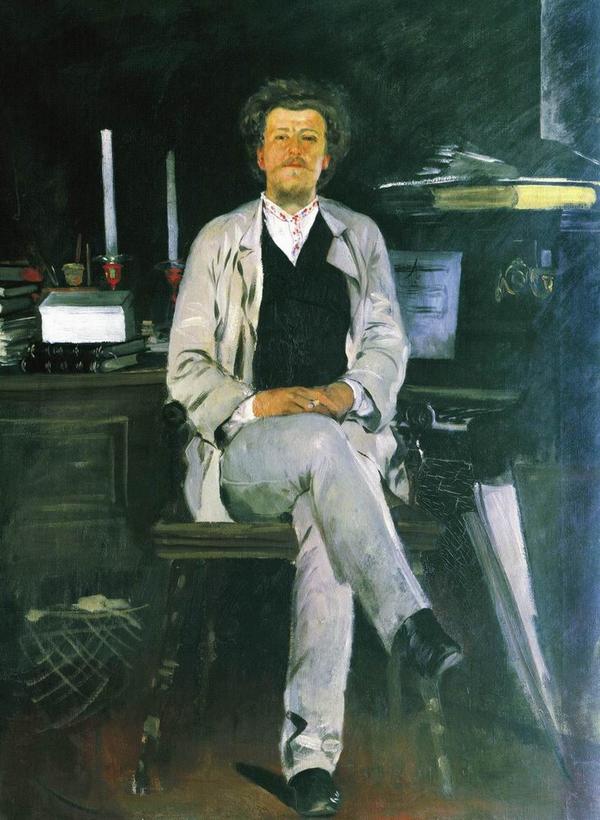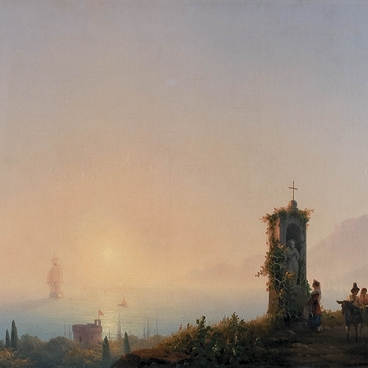Andrey Ryabushkin painted the portrait of his friend Iliya Tumenev and his wife at the beginning of the 1890ies. The artist did not compete the painting, which is noticeable in the depiction of the landscape. The nature is sketched in free broad-brush strokes, outlining just a few images. Despite being incomplete, the picture is very expressive, especially the figure of Tumenev. He seems to be excited, as if wanting to say something. The topic of ‘gratification’ became a characteristic feature of art on the cusp of the 19th and 20th centuries.
Portrait of Tumenev with his wife
Время создания
Beginning of the 1890ies
Размер
105x105,5 cm
105,5х105,5 см
105,5х105,5 см
Техника
Canvas, oil
Коллекция
3
Открыть в приложении#1
Andrey Ryabushkin
Portrait of Tumenev with his wife
#3
#6
Andrey Ryabushkin, portrait of I.F. Tumenev, 1886-1888. The picture is kept in Tumen Regional Museum of Fine Arts. img via: wikipedia.org
Ryabushkin and Tumenev got acquainted in the Academy of Arts, where they both studied. They soon became close friends and Ryabushkin often visited Tumenev in his estate Privolie. These visits turned into gatherings of folk art admirers. Later Ryabushkin came to live with his friend and Tumenev put an extension to his house for the artist’s studio. The majority of Ryabushkin’s artworks were created in that studio. One of the pictures depicts Tumenev in the study with a grand piano in the background.
#5
Andrey Ryabushkin was, above all, famous for his historical folk paintings. Tumenev recollected that Ryabushkin was interested ‘in every little detail, every old dress and costume, song, scribe and old-fashioned household appliance, carvings on wood houses or patterns on antique fabrics and towels. <…> He would memorize every interesting tune, every apt word or phrase, in other words, he was passionate about Russian folk culture.’
He also worked in the style of monumental painting, creating designs for the frescoes of the Novgorod Cathedral of St. Sophia, the family chapel in St. Petersburg and the Warsaw Orthodox Christian Cathedral.
Ryabushkin’s devotion to religious topics is not coincidental. His father and older brother were both icon painters and he learned the art of painting from them. He lost his parents at the age of 14. A student of Moscow Art School was visiting Stanichnaya Sloboda, where the boy was living at the time. He noticed the talented young man and invited him to come to Moscow. He helped Ryabushkin enroll in the Art School. Ryabushkin studied in Moscow until the death of his teacher Vasily Petrov and then moved to St. Petersburg, continuing his education in the Academy of Arts.
He also worked in the style of monumental painting, creating designs for the frescoes of the Novgorod Cathedral of St. Sophia, the family chapel in St. Petersburg and the Warsaw Orthodox Christian Cathedral.
Ryabushkin’s devotion to religious topics is not coincidental. His father and older brother were both icon painters and he learned the art of painting from them. He lost his parents at the age of 14. A student of Moscow Art School was visiting Stanichnaya Sloboda, where the boy was living at the time. He noticed the talented young man and invited him to come to Moscow. He helped Ryabushkin enroll in the Art School. Ryabushkin studied in Moscow until the death of his teacher Vasily Petrov and then moved to St. Petersburg, continuing his education in the Academy of Arts.
#7
New Jerusalem Museum
читать дальшескрыть
00:00
00:00
1x
Portrait of Tumenev with his wife
Время создания
Beginning of the 1890ies
Размер
105x105,5 cm
105,5х105,5 см
105,5х105,5 см
Техника
Canvas, oil
Коллекция
3
Открыть в приложении
Поделиться




